The Cosmic Infinity A Vedic Perspective: A Critical Commentary on Pandita Madhusudana Ojha's “Vijnana Vidyuta”
This cosmos is brahmamaya. This creation has been called the canopy or expansion of Brahma. Whatever we see in this world has emanated from that very Brahma. In the course of time, everything will merge with him again. The very knowledge of how the entire universe comes into existence from that one Brahma or continues to come into being is called vijnana. Based on this universal truth, this book could be called a hymn to interconnectedness that Brahma is the alpha and omega of the entire universe. Thus, it underlines the truth that the entire creation is the karmic form of Brahma’s knowledge, evolution and expansion. Highly metaphysical in structure and content, this volume calls for deep reflection and meditation for one to grasp its content in full sense.
CONTENTS
Foreword – Dr Thomas C. Daffern
Preface
Prathama Prakāśa : Catuṣpād Brahma
1.Brahma
Brahma and Māyā (Rasa and Bala)
2.Pura
Dvitīya Prakāśa
3.Puruṣa
The Second Dimension (Step) of Brahma: Puruṣa
The Etymology of the Word “Puruṣa”
Rasa Bala
Ākāśa
Dharma–Dharmī
Ṣoḍaśī
The Eternity of Puruṣa
Variegation or Diversity of Puruṣa
Citya-Citenidheya
Vayaḥ Vayo
Seven Puruṣas
Puruṣārtha
4.Kṣara-Puruṣa
Puruṣatraividhye Kṣarapuruṣaniruktiḥ
Kṣara Puruṣa in Three Puruṣas
Kṣarapuruṣapāñcavidhyam
Five Forms of Kṣara-Puruṣa
5.Akṣara-Puruṣa
Hrdyākṣaratrayaprṣṭhyākṣaradvayavimarśaḥ
Identity of Akṣara-Puruṣa
The Forms of the Three Akṣara-Puruṣas Located in the Heart
Five Forms of Akṣara-Puruṣa
Hrdaya
Agni–Soma
Pañcākṣaravivarttāḥ: Veda-yajña-prajā-loka- dharmmāḥ
The Five Vivartas (Facets) of Akṣara
Veda
Yajña
Prajā
Loka
Dharma Vīrya
6.Avyaya-Puruṣa
Avyayapuruṣaniruktiḥ
Etymological Interpretation of Avyaya-Puruṣa
Avyaya-Puruṣa
Difference and Similitude between Avyaya and Parātpara
Avyaya’s Attributes of Sat-Cit-Ānanda
The Unbodied Form of Avyaya-Puruṣa and the Association of the Infinite Bodies
with One Another
Being Triple is the Cause of the Upādhi (in the Form of a Body) of Prajāpati an Entity Evolved
From the Integration of the Three Puruṣas
Avyayasya Pañcadhātukatvam
Avyaya’s Entwining with the Five Elements
The Five Elements of Avyaya
Avyayasya Srṣṭisākṣītvamuktisākṣītvavivekaḥ
Avyaya’s Principle of Creation and Emancipation
Trtīya Prakāśa: Adhikaraṇa of Avyaya
7.Adhidaivata
Avyayasyādhikaraṇatrayānugatau tāvadadhi-daivataniruktiḥ
Adhidaivata in the Context of the Three Substrata of Avyaya
Prāṇamayaḥ Svayambhūrbrahmā
Svayambhū Brahmā Pervaded with Prāṇa
Svayambhū Brahmā (Permeated with Vāk)
Āpomayaḥ Parameṣṭhī Viṣṇuḥ
Parameṣṭhī Viṣṇu: Pervaded with Āp
Bhrgu
Aṅgirā
Atri
Vāgbrahmamayaḥ Sūryya Indro ’kṣaraḥ
The Sun, Indra, Akṣara Permeated with Vāk and Brahma
Annādabrahmamayī Prthivī Agnirakṣaraḥ
Prthivī Permeated with Annāda-Brahma and Akṣara Agniḥ
Annabrahmamayaścandramāḥ Somo ’kṣaraḥ
Anna Brahmamaya Candramā Akṣara Soma
Saptalokavibhāgaḥ
The Divisions of Seven Lokas
Three Lokas
Saptalokānāmekāvyayapuruṣodaravartitvam
The Seven Lokas are Located Within the Belly of One Avyaya Puruṣa
8.Ādhibhautika
Ādhibhautikaniruktiḥ
The Etymological Interpretation of Ādhibhautika
9.Adhyātma
Ādhyātmikaniruktiḥ
The Etymological Interpretation of Adhyātma
The Īśvara Prajāpati Centre of Ātmā
Mana (Mind)
Sarvātmanāmādhāraścidātmā
Cidātmā: The Basis of All Ātmās
Prathamaḥ Prāṇamayaḥ Śāntātmā Brahma
First Śāntātmā: Brahma Permeated with Prāṇa
Dvitīya Āpomayo Mahānātmā Viṣṇuḥ
The Second Mahānātmā: Viṣṇu Filled with Āp
Vāgbrahmamayastrtīyo Vijñānātmā Indraḥ
Third Vijñānātmā: Indra Permeated with Vāk and Brahma
Annabrahmamayaścaturthaḥ Prajñānātmā Somaḥ
Fourth Prajñānātmā: Soma Permeated with Anna and Brahma
Pañcamo ’nnādamayo Bhūtātmā Śarīrātmā – Agniḥ
The Fifth Ātmā called Bhūtātmā of the Body is Pervaded with Annāda Agniḥ
Dvitīyo Bhūtātmā Haṁsātmā Martyavāyuḥ
The Second Bhūtātmā Haṁsātmā: Perishable Vāyu
Tṛtīyo Bhūtātmā Divyātmā Prāṇaḥ
The Third Bhūtātmā Divyātmā Prāṇa
Karmātmatraividhyaniruktiḥ
The Etymological Interpretation of the Three Types of Karmātmā
Bhūtātmā
Prajñānātmā
Ātmagativivekaḥ
The Journey of the Soul after Death
Adhyātmaṁpañcākṣarapuruṣopasaṁhāraḥ
The Five Akṣara-Puruṣas in Physical Dimension: Conclsion
Sūrya as a Great Ocean
Avyayadhātūnāmadhyātmaṁ Viniyogaḥ
Application of the Five Components of Avyaya inAdhyātma (Physical Dimension)
Avyaya-Srṣṭi Mukti Sākṣī (World of Avyaya, Witness to Liberation)
Avyayakalānāmadhyātmaṁ Pañcakośatvam
The Five Sheaths of the Dispositions (Kalās) of Avyaya is Adhyātma (Physical Dimension)
Adhyātmaṁ puruṣatrayanirvacanopasaṁhāraḥ
Three Puruṣas in Adhyātma (Physical Dimension)
10.Puruṣa Sūkta
Caturtha Prakāśa
11.Parātpara
Parātparastrtīyaḥ Pādaḥ
Parātpara: The Third Dimension of Brahma
Catuṣpād Brahmaṇaḥ
The Etymological Elucidation of the Form of Parātpara Brahma
Parātparapuruṣayovaidharmyaniruktiḥ
Dissimilarity Between Parātpara and Puruṣa
Dissimilarity and Similarity Between Parātpara and Prajāpati
Puruṣasya Citisambandhāt Srṣtihetutvam
The Cause of Creation: Citi Relationship in Puruṣa
Bala Srṣṭipratisrṣṭikāraṇabalaniruktiḥ
An Introduction to Balas which are the Cause of the Creation and Dissolution of the Cosmos
Ātmani Muktikāle Karmātyantanivrttimata-khaṇḍanam
Refutation of the View that Ātmā Remains Completely Free from all Karma During
State of Liberation
Brahmapādacatuṣṭaye Dvābhyāṁ Dvābhyāṁ Saṁsāranistārayorvyavasthā
Of the Four Dimensions of Brahma, Two Create the Cosmos and the Other Two Dissolve It
Pañcama Prakāśa
12.Nirviśeṣa
Nirviśeṣasturīyaḥ Pādaḥ
Nirviśeṣa : the Fourth Dimension (Leg) of Brahma
Nirviśeṣaniruktiḥ
An Etymological Analysis of Nirviśeṣa
13.Granthopasaṁhāraḥ (Epilogue of the Treatise)
Similarity and Dissimilarity Between Nirviśeṣa and Parātpara
14.Pandit Madhusudan Ojha
(A Brief Biographical Sketch)
Early Childhood and Education
Entry into Government Service
Historic Journey to England in 1902
Poet Madhusudan
A Great Vedic Scholar
Glossary
Index
This book, a pristine and authentic commentary of Brahma-Vivarta by Dr Gulab Kothari, is a glimpse of the mind of Pandit Madhusudan Ojha, a great Sanskrit and Vedic scholar, who is fondly called by many contemporary Indology scholars as modern Vyasa. Ojha tries singlehandedly to convey the fruits of his years of studying the Vedas, and wants to explain and explore them according to the marrying up of their ancient wisdom with modern scientific epistemologies which is an enormous task.
The purpose of this whole thing is to reach a state of wisdom, knowingness, samadhi, enlightenment, nirvana, kevala jnana whatever term one may like to attribute. In a nutshell this book deliberates in detail on one fundamental reality, i.e. Brahma.
Get it now and save 10%
BECOME A MEMBER

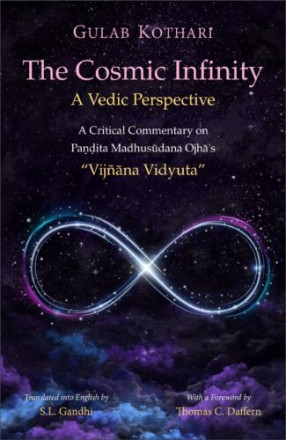
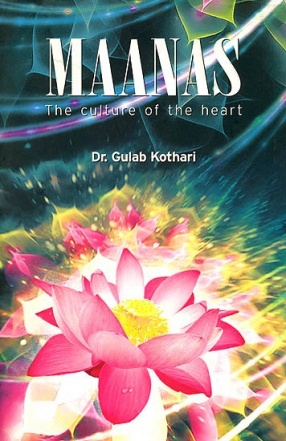
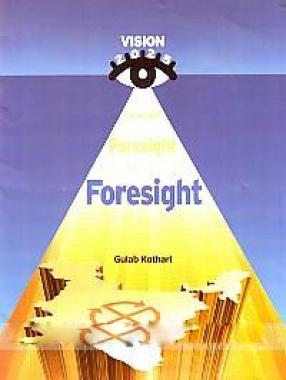
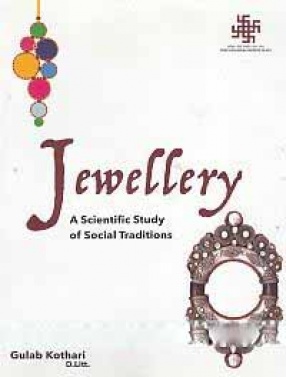
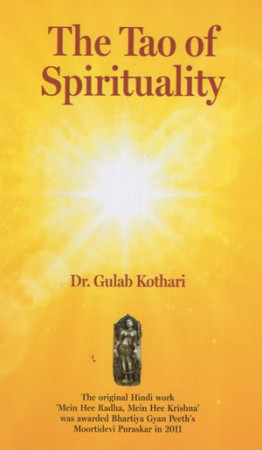


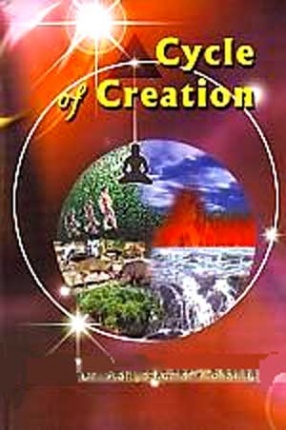
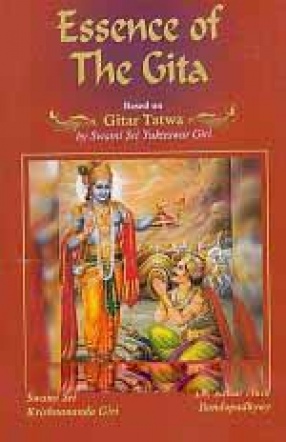

Bibliographic information
Dr. Thomas C. Daffern